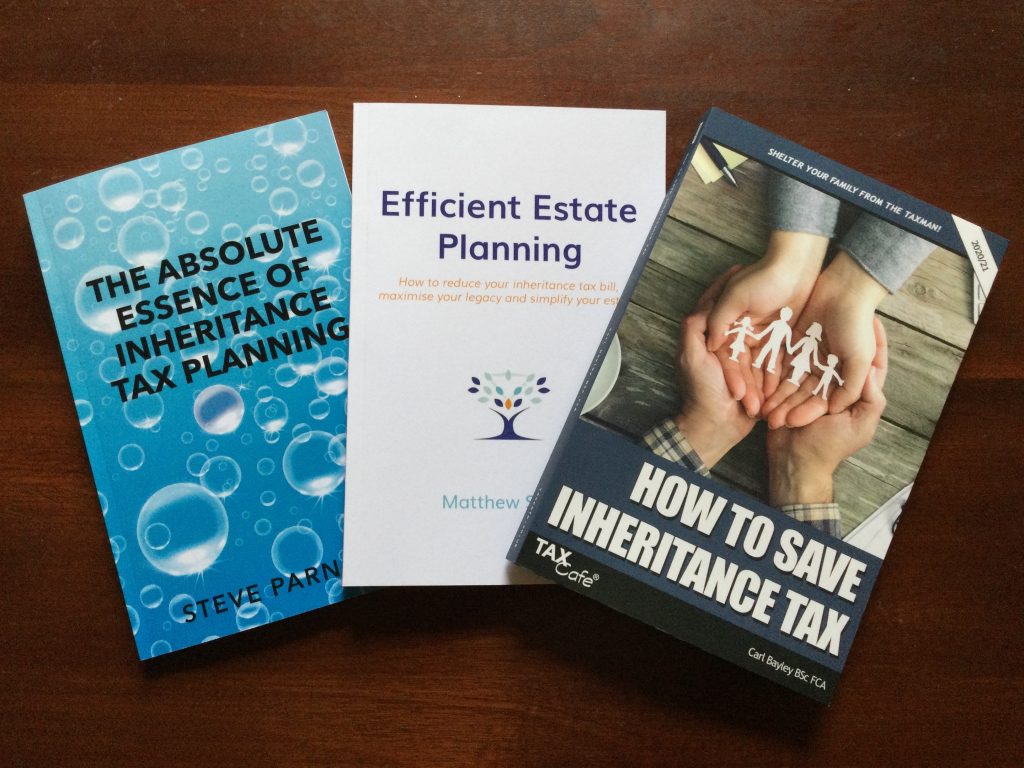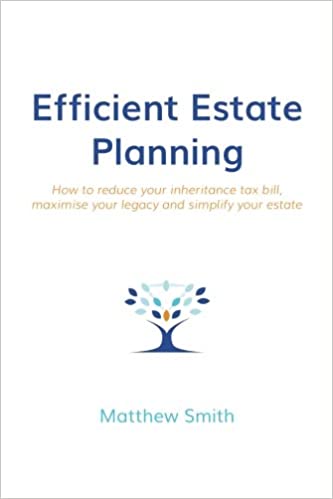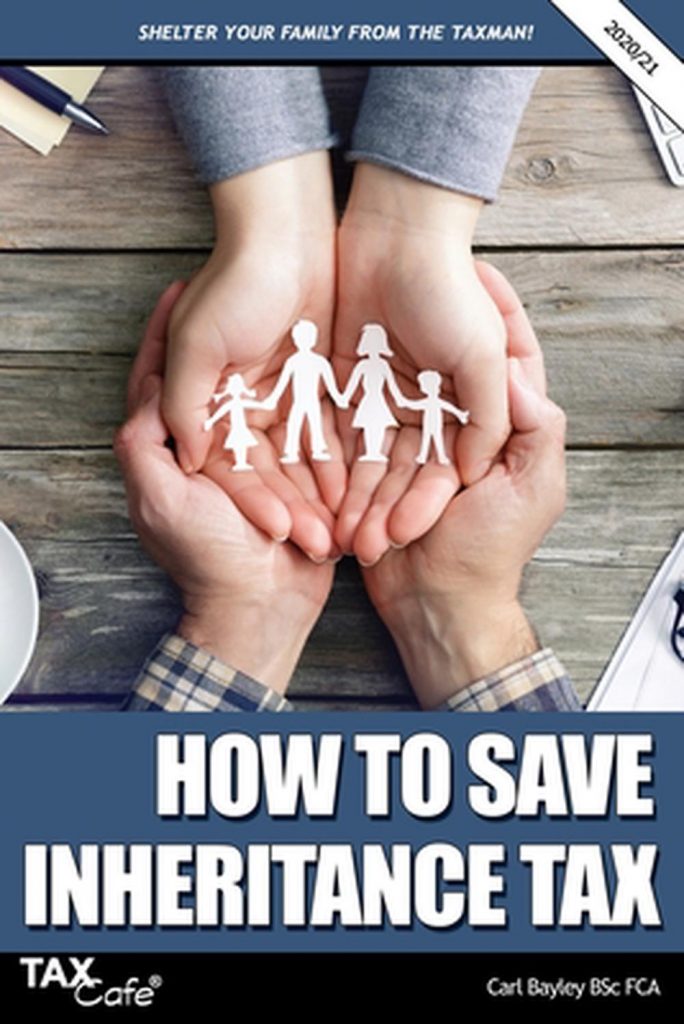Although I have been looking at Business Relief products for a few years now, I haven’t got to grips with nuances of Inheritance Tax. Until now. I felt it was time, so I picked up three top rated books off Amazon to find out more. Although all are rated highly, it was clear each has different strengths and weaknesses. So here’s a little guide to finding the one that you need.
The three books that I read were, in increasing price order:
- The Absolute Essence of Inheritance Tax Planning by Steve Parnham
- Efficient Estate Planning: How to reduce your inheritance tax bill, maximise your legacy and simplify your estate by Matthew Smith
- How to Save Inheritance Tax 2020/21 by Carl Bayley

Rather than writing three separate reviews, I thought it might be better to compare and contrast. Its fair to say the first two have more in common with each other than the third.
Readability
The Parnham and Smith books are both self-published books and are written in a relaxed style. This makes both surprisingly readable, and they will be accessible to most people. The Parnham book could do with better typesetting, as it has some orphan headings and at least one typo, but they don’t detract from the content. The Smith book suffers no such issues.
The Bayley book is published by TaxCafe and, despite the reference to humour in the intro, is a heavy duty read. Even with a font size almost half the size of the others, its twice the length. It is obviously going for precision, and working through every possible circumstance. I liked the use of musicians and bands in examples, but it still felt like hard going compared to the other two.
While few people like paying tax, Inheritance Tax seems to bring out particularly strong feelings. None of the authors like it, but Bayley expresses the strongest opinions, calling it immoral. Whether for that reason, or perhaps simply the desire to be comprehensive, a couple of his solutions may seem immoral to some too. Few would marry their child’s fiance!! They certainly raised my eyebrows!
Technical Inheritance Tax content
Its always dangerous to judge the quality of content on a technical subject that you aren’t an expert in. But here goes…
Its clear that all the authors know their stuff, but have chosen to pass on different amounts of this. The two self-published authors decided to go for a less technical approach than Bayley. However, they still contain a fair amount of detail: the nature of IHT is that there are some technicalities that cannot be avoided by anyone. Although the Smith book is a little older than the other two, there appears to have been no interim changes in legislation so it has dated well.
There are some clear differences between the Parnham and Smith books. The former places a lot of emphasis on the psychology needed to approach IHT, with an focus on structured thinking. Sadly, the author could do with a little more of that in his writing. The Smith book seemed better structured and written in a more precise way, while the Parnham book occasionally wasn’t completely clear.
The Bayley book takes a completely different approach. It is clearly written with the aim of being as comprehensive as it can reasonably be. It systematically works through what looks like every conceivable option, explaining exactly what could be done or what will happen. There are probably combinations of circumstances that will probably only be relevant to a handful of its readers, but the range of options it gives is almost breathtaking. Unfortunately, this is because it reveals the full depth of potential IHT complications.
Different subject areas
Many readers will have a rough idea of their circumstances, and possibly what solutions may be open to them. As the books have very different coverage, it may be helpful to outline some of these:
Basics: all the books cover the basics of IHT, including allowances and nil rate bands, including housing, exempt gifts, potentially exempt transfers and chargeable transfers.
Trusts: the use of trusts is an important option in IHT planning, and was one of the areas I knew little about. The books were wildly different in their coverage. Parnham barely mentions them, while Smith gives a very clear basic explanation. This gave me what I thought was a clear understanding – until I read Bayley. The latter goes through all the conceivable permutations and can leave your head spinning! I suspect most will find the Smith approach best, but it is good to have Bayley for those options if I need to refer to them.
Business: if you own a business and it could be part of your estate, then Bayley is the only option. The other two acknowledge there is an issue, but give little guidance.
Investment options: given my own background, I was interested to see what they would say on using investments, which is primarily Business Relief options. Sadly all three were rather weak on this. They have differing degrees of comfort or scepticism about buying shares for BR purposes, and clearly none of them are investment experts. Smith probably gives the most balanced opinion. Bayley is more focused on the things he does know about, which are the other planning options and property. Parnham is almost dismissive of the BR investment option.
So which IHT book is best?
There is an element of horses for courses. Once you get beyond basic gifting, pretty much everyone will need professional advice that these books cannot supply.
For most people, the best option will be Efficient Estate Planning by Matthew Smith. This gives a straightforward, readable introduction to IHT and the planning required. It will allow some people to do the basics themselves. For those seeking advice, it will give them a good basic understanding so they can have more productive conversations. However, if you are a business owner or your circumstances extend beyond the most common situations then you may find it limited.
Those who need more than Smith should get How to Save Inheritance Tax by Carl Bayley. If you have remarried after divorce, have minor kids, a business, CGT issues or are worried about domicile then its all in here. Although its a thorough book, it may be better for reference than reading. And some will want to read Smith first to get a basic understanding before moving onto this. Advisors will probably want this on their shelf.
If you are really tight, The Absolute Essence of Inheritance Tax by Steve Parnham is the bargain of the bunch. Although I wanted to like it, sadly the only circumstance where I would recommend it over the other two books other is to save you a tenner. It has 4.4 stars out of 5 on Amazon, and the reviewers like it so its not all bad, but the others are better.
What’s next for Inheritance Tax?
There are currently (early 2021) several proposals for changing the IHT regime. Bayley summarises these at the end of his book, while the others only mention that legislation may change. While some of the proposals are minor, others, if enacted, would change the IHT regime substantially and could render large parts of all these books in need of a rewrite.
If there have been legislative changes by the time you read this, then check that updated editions are available. Bayley has had a new version for each of several recent tax years, but the self-published ones do not appear to have been updated. Make sure before you buy!



Thanks for your views on the three books.
I will now attend a free seminar on IHT before buying either book.